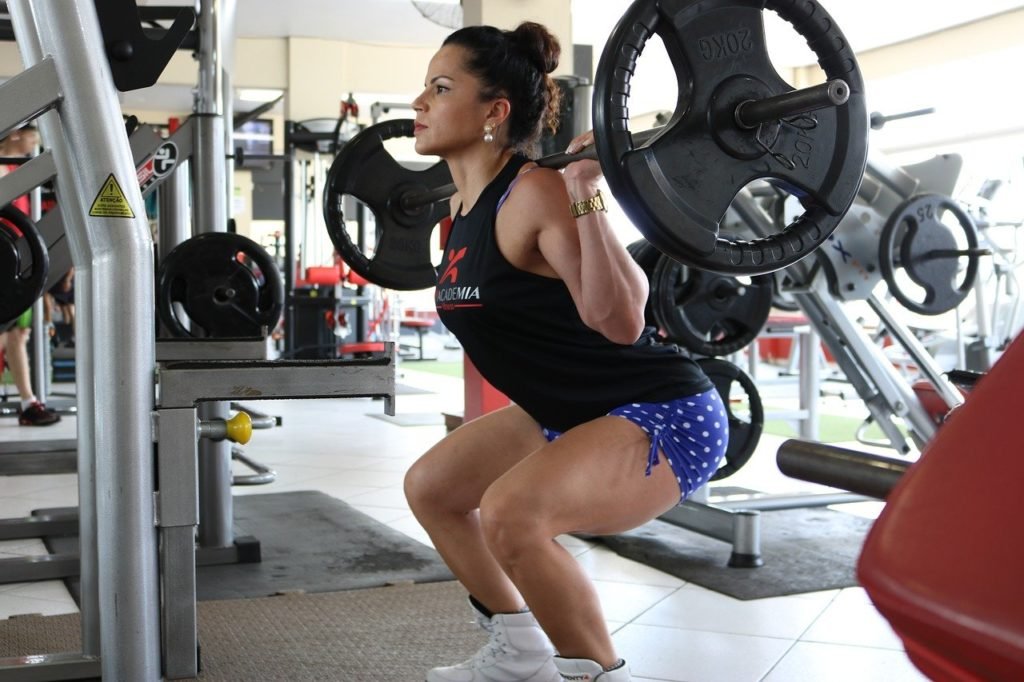How To Choose The Right Weights For Your Strength Training Exercises
One of the most important strength training skills, and something I see people get wrong all the time, is knowing how to choose the right weights for each exercise.
It's easy to find programs online which will tell you which exercises and how many sets and reps to do, but most programs don’t teach you some of the essential skills of strength training. Without those skills, you won't get the benefits you’re working so hard for.
Choose The Right Weights To Stimulate Your Muscles To Get Bigger and Stronger
If you want to build muscle and strength, you need to lift weights that are heavy enough to stimulate your muscles to grow. When you lift heavy weights, you force your muscles to contract past a certain threshold. That's what sets off the muscle growth process.
In my experience, most people underestimate how much they should be lifting. They also stop their sets before they really challenge their muscles. If you do that, you’re going to miss out on many of the benefits of strength training.
I’ve trained a lot of people who don’t realize how strong they are and are pleasantly surprised by how much weight they can actually lift. Learning to push yourself and recognize when you've really fatigued your muscles is another strength training skill, and you’ll get better at it with practice.
How To Choose The Right Weights – Step By Step
Choosing the right weights to use for each exercise is a process of trial and error.
You'll need to go through this process for every exercise. You’ll be able to lift different amounts of weight depending on the exercise, the number of reps you're doing, and the muscles you’re using during that exercise.
For example, you should usually use more weight on leg exercises than chest exercises. That's because your leg muscles are bigger and stronger than the muscles in your chest.
Even exercises for the same muscle group need different weights. Most people can lift more weight in a barbell chest press than a dumbbell chest press, because the barbell is more stable than the dumbbells.
Here’s how to figure out the right weight to use for an exercise. I’ll use a barbell squat as an example.
Step 1:
Decide on your rep number. Pick a number between 6 and 12. Let’s say you decide to aim for 8 repetitions.
Step 2:
Take a guess. Everyone’s starting strength is different, so you’ll have to make an educated guess about which weight to start with. It’s a good idea to start lighter than you think you can handle.
Let’s say for your first set of barbell squats, you load up a standard barbell (which weighs about 45 pounds) with another 10 pounds (5 on each side). Note that you are using 55 pounds, because you’re lifting the bar itself plus the weight plates on it.
You get to repetition number 8 and it’s starting to feel a little challenging, but you still feel like you could do one more with good form. In that case, you should do that 9th rep. Then, if you feel that you couldn’t do one more without sacrificing your form, you end the set. You underestimated the amount of weight that you could lift for 8 repetitions.
Step 3:
Adjust. On the next set you add 10 more pounds to the bar so you are now lifting 65 pounds. This time you overestimated, and you can only do 7 with good form.
Step 4:
Adjust again. On your third set, you lift 60 pounds and are able to do 8 good form repetitions but feel that an 9th would not be possible, so you end the set at 8.
Step 5:
Record what you did. Make a note that you were able to squat 55 pounds for 9 reps, 65 pounds for 7 reps, and 60 pounds for 8 reps. In your next workout, you can look at your previous note and know that you should use 60 pounds if you want to perform 8 reps per set. Then you can use the principle of progressive overload and start working your way up in reps or increase the weight slightly.
It’s totally fine that you didn’t do exactly 8 reps on each set. The rep prescription is not some magic number that you have to hit exactly every time.
What’s much more important is that you provided adequate stress on your muscles so they will adapt by getting bigger and stronger, and that you try to do a little more in your next workout.
If You Need Help...
You've come to the right place!
Download my FREE Strength Training 101 eBook, which teaches you the basics of setting up your own safe and effective workout program (including sample workouts).
To get started on your strength training journey right now, check out my Strength Training For Anxiety Program. It’s a 12-week workout program, guided by an app so you can do the workouts on your own, anytime, anywhere. It also includes even more in-depth instructions on choosing the right weights and making sure you're doing your exercises correctly, plus unique features, video lessons, and worksheets specifically designed to help manage anxiety.
For fully customized, one-on-one personal training, contact me!


